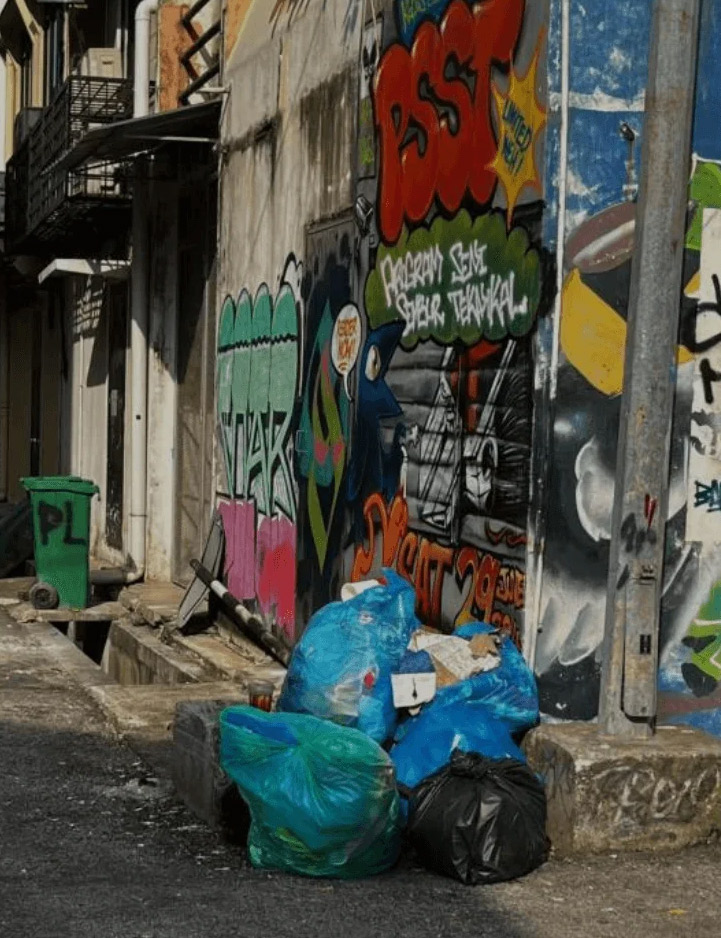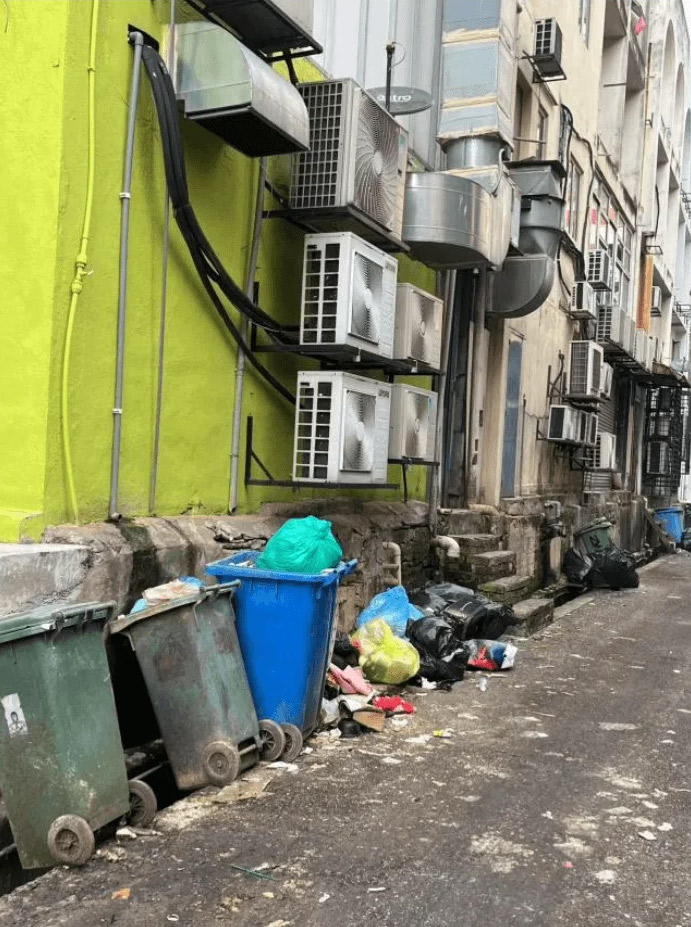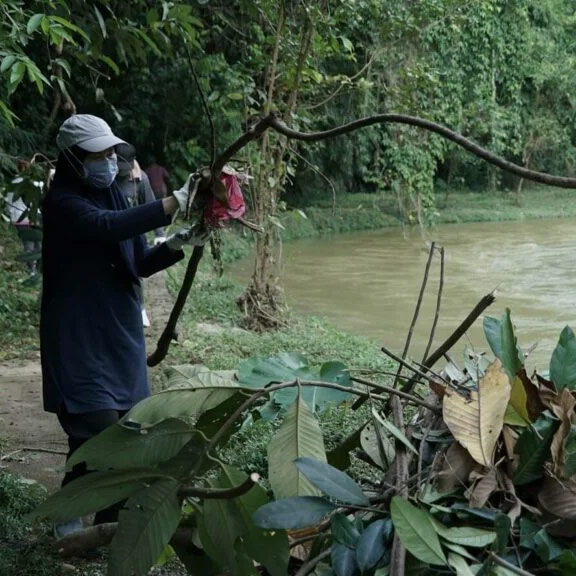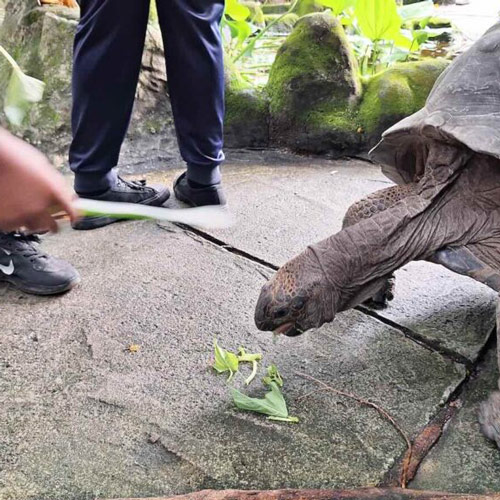Note: This story might contain factual or contextual inaccuracies as it was submitted by the authors as part of a competition and was published for the judges to evaluate without any editing or corrections made by the organisers or YELL.
In Malaysia’s Subang jaya district, the bustling SS15 street during daylight hours is a culinary paradise for food lovers. From Korean-style fried chicken to Japanese ramen, from Thai barbecue to local coconut rice, restaurants line up one after another. Crowds throng the area as delivery riders weave through the crowds, while social media is flooded with mouth-watering photos of these delectable dishes.
But when night falls, a story rarely captured in filter-optimized photos quietly unfolds. According to statistics from Subang Reja City Council, SS15 generates about 1 to 1.3 tons of kitchen waste nightly. Nearly half consists of uneaten or partially consumed food: unopened takeaway meals, unopened beverages, imported snacks nearing expiration dates, and dishes discarded immediately after preparation.
The scene is shocking: hot meals already in plastic bags, shattered plastic packaging, rice and broth mixed into sticky wastewater, even sealed drinks carelessly discarded. Behind this vibrant culinary scene lies a hidden crisis of waste.
 (Photo: Xieshenye)
(Photo: Xieshenye)
Daytime bustle, nighttime decay. This waste isn’t caused by any single individual but rather a systemic byproduct. Restaurants often stock extra ingredients to handle unpredictable customer flow, while “buy more, save more” promotions encourage over-ordering.
Current health regulations also restrict businesses from redistributing unsold yet safe food. “We’ve noticed waste,” said Xiao, owner of Sen Sen Spicy Hot Pot.
“Many customers take leftovers home but don’t eat them, though few intentionally waste food here.” He noted that garbage trucks typically collect late-night waste, “We try to clear it promptly, but customer behavior is beyond our control.” Another respondent, owner of “Sister Li’s Side Dishes,” he admitted frankly: “We do have leftovers. We handle them ourselves—like using staff meals or adjusting portions. It’s impossible to completely avoid waste.”
Street interviews revealed similar issues. “I often see whole takeout boxes thrown into trash bins,” said a nearby college student. “Sometimes even the milk tea hasn’t been opened.” Another resident added: “After 10 PM, you can smell that sour odor from back alleys.”
Who is to blame? The systemic issue of food waste in SS15 isn’t an isolated incident but a deeply ingrained urban habit. In this fast-paced, high-consumption system, food gets reduced to commodities, decorations, and traffic flow tools rather than being valued as resources or cultural bonds. “Sometimes we pack our meals still warm, only to see the same dishes rot in the alleyways,” a student lamented with resignation. “It feels so ironic.”
 (Photo: Xieshenye)
(Photo: Xieshenye)
Is there a solution? Perhaps. Despite the challenges, some shop owners and community organizations are making efforts to change the status quo: Offering smaller portions—like Sister Li’s restaurant’s “half portions” and “small bowls” that have become popular among solo diners; Optimizing inventory management through weather forecasts and historical data, with one merchant adjusting daily food prep by 30% when customers drop off during rainy days; Implementing closing promotions like discounted combo meals after 9:30 PM to clear unsold items; Partnering with food recycling organizations such as The Lost Food Project to establish transparent donation procedures and legal protections; Launching a “Zero Waste Merchant” certification program with local governments, incentivized by platform visibility and reduced waste disposal fees.
Yet food isn’t just merchandise—it embodies land, labor, time, and culture. Every discarded meal squanders these resources and betrays the reverence we owe to the word “food.”

(Photo: Xieshenye)
Some businesses are making changes. For instance, Li Jie’s staff mentioned adopting “half portions” to encourage bulk ordering, while Boss Xiao noted they remind customers to “order smaller next time” if leftovers remain. Though modest, these efforts mark a step toward confronting food waste. At the policy level, communities collaborate with recycling agencies to promote “safe food redistribution programs.”
On the consumer side, we might adopt simpler measures: —— Think carefully before ordering, resist being swayed by “buy more for better deals,” avoid taking leftovers home, or finish them immediately. Food has always been a cultural and labor-intensive medium of human connection. Yet in modern consumption, it becomes mere photo fodder, stock items, or replaceable content. When we leave SS15 with that box of cheese rice cakes, we know their fate may mirror those unrefrigerated meals at street stalls. If we remain indifferent, what escapes our hands isn’t just aroma but also the reverence we should hold for food itself.
Waste, in essence, is a matter of choice.
The food waste issue during SS15 appears as a hygiene concern on the surface, but fundamentally stems from cultural blind spots and systemic imbalances. Yet it’s not an unsolvable problem. As long as businesses are willing to experiment, policies are updated, and consumers make conscious choices, this “invisible issue” can be brought to light and transformed. The back alleys behind restaurants may never have been captured by cameras, but that doesn’t mean they should be overlooked.
Food, originally a bridge connecting people, a shared expression of emotions and culture, has now become something replaceable and disposable through platform recommendations, inventory turnover, and urban waste disposal cycles. The moment these foods get tossed into garbage bags, what gets truly wasted isn’t just nutrients and resources, but the essential respect and connection between humans and food itself.
Disclosure: The author wrote this story in Microsoft Word and used Microsoft Translator, which is powered by AI.
This story is a finalist entry that was produced as part of the “Environmental Stories Workshop and Competition”. The workshop and competition was co-organised by Macaranga Media, Universiti Malaya, and Taylor’s University. The event was funded by a grant from Youth Environment Living Labs (YELL), administered by Justice for Wildlife Malaysia. The content of this story does not necessarily reflect the opinion of YELL and their partners. The Award Ceremony will be held on 2 August at Universiti Malaya.
Source:
https://www.macaranga.org/behind-the-bustle-the-neglected-food-waste-ss15-night-crisis/







